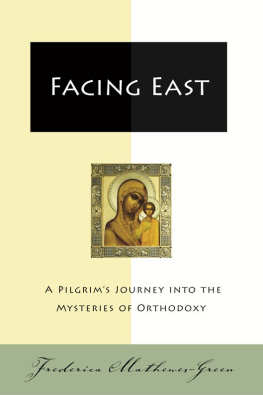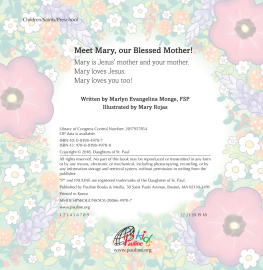ABOUT PARACLETE PRESS
Who We Are
Paraclete Press is an ecumenical publisher of books and recordings on Christian spirituality. Our publishing represents a full expression of Christian belief and practicefrom Catholic to Evangelical, from Protestant to Orthodox.
Paraclete Press is the publishing arm of the Community of Jesus, an ecumenical monastic community in the Benedictine tradition. As such, we are uniquely positioned in the marketplace without connection to a large corporation and with informal relationships to many branches and denominations of faith.
We like it best when people buy our books from booksellers, our partners in successfully reaching as wide an audience as possible.
What We Are Doing
Books
Paraclete Press publishes books that show the richness and depth of what it means to be Christian. Although Benedictine spirituality is at the heart of all that we do, we publish books that reflect the Christian experience across many cultures, time periods, and houses of worship.
We publish books that nourish the vibrant life of the church and its peoplebooks about spiritual practice, formation, history, ideas, and customs.
We have several different series of books within Paraclete Press, including the best-selling Living Library series of modernized classic texts; A Voice from the Monasterygiving voice to men and women monastics about what it means to live a spiritual life today; award-winning literary faith fiction; and books that explore Judaism and Islam and discover how these faiths inform Christian thought and practice.
Recordings
From Gregorian chant to contemporary American choral works, our music recordings celebrate the richness of sacred choral music through the centuries. Paraclete is proud to distribute the recordings of the internationally acclaimed choir Glori Dei Cantores, who have been praised for their rapt and fathomless spiritual intensity by American Record Guide, and the Glori Dei Cantores Schola, which specializes in the study and performance of Gregorian chant. Paraclete is also the exclusive North American distributor of the recordings of the Monastic Choir of St. Peters Abbey in Solesmes, France, long considered to be a leading authority on Gregorian chant performance.
Learn more about us at our Web site:
www.paracletepress.com,
or call us toll-free at
1-800-451-5006
Her hands steadied the first steps of him who steadied the earth to walk upon; her lips helped the Word of God to form his first human words.
ST. JOHN OF DAMASCUS (AD 676780)
ALSO BY FREDERICA MATHEWES-GREEN

First Fruits of Prayer
A Forty-Day Journey
Through the Canon of St. Andrew
ISBN 13: 978-1-55725-469-6
234 pages
$19.95, Hardcover
An invitation to pray as the early Christians once did.
J oin Frederica Mathewes-Green on a guided retreat through the classic Great Canon. A poetic hymn written in the eighth century, this extraordinarily beautiful work is still chanted by Eastern Christians during Lent.

The Illumined Heart
The Ancient Christian Path of Transformation
ISBN 13: 978-1-55725-286-9
112 pages
$13.95, Hardcover
D rawing on Christian writings throughout the early centuries, Frederica Mathewes-Green illuminates the ancient, transcultural faith of the early church.

The Open Door
Entering the Sanctuary of Icons and Prayer
ISBN 13: 978-1-55725-341-5
165 pages
$16.95, Hardcover
M athewes-Green welcomes readers into an imaginary Orthodox church to view twelve of the worlds most famous icons throughout the church year. Includes four-color illustrations, stories of the saints, and prayers appointed for the day.
Available from most booksellers or through Paraclete Press
www.paracletepress.com
1-800-451-5006
Try your local bookstore first.
ONE

Telling
Marys Story
James who?
THE FIRST ANCIENT TEXT PRESENTED IN THIS BOOK, the Gospel of Mary, provides stories about Mary that were greatly loved in the early church. These engaging narratives cover Marys life from her conception through the birth of Christ, and were gathered into written form sometime before AD 150. The material itself could well be older, and in a time when illiteracy was still common, it could have been passed along orally for some time before anyone transcribed it.
While today Western scholars call this the Protevangelium of James, in the early church it went by several different titles. The common mark was some reference to James, since thats who claims to be the author in the books closing words: I, James, wrote this history.
Who is this James? There are three famous Jameses in the New Testament. The first was a member of the twelve apostles, and even a member of the trio closest to the Lord, Peter and James and John. Hes called James the Greater. Another apostle, James the son of Alphaeus, is usually called James the Less. However, the Greek adjective micros may mean younger or smaller, and since both were members of the Twelve, perhaps their friends called them Big James and Little James to tell them apart.
The third James is identified in Scripture as James, the Lords brother. He is called James the Just. This is the James who is claimed to be author of this Gospel.
This James appears several times in the New Testament. In 1 Corinthians 15, St. Paul tells us that James received a private appearance of the Resurrected Lord. In Acts 15 we see him presiding over the first church council, in his capacity as the first bishop of Jerusalem (likely the first bishop anywhere). In addition to being author of biblical Epistle of James, he is also credited with writing the oldest surviving Eucharistic liturgy, the Liturgy of St. James. This worship service was edited and condensed in the fourth century, and the shorter version, now called the Divine Liturgy of St. John Chrysostom, is still the standard Sunday worship of the Eastern Orthodox Church.
The church historian Hegesippus, writing about AD 165, says that James was respected by all and that even non-Christians called him James the Just. He prayed so much that his knees became calloused like those of a camel.
Hegesippus also recounts James death. Jewish leaders, concerned at the rise of Christianity, and believing James to be a righteous and reasonable man, brought him to the summit of the Temple to address the populace. But instead of dissuading them, James preached the second coming of Christ, and many began to cry Hosanna to the Son of David! The Pharisees then shoved James off to the ground, where he struggled to his knees and asked Gods forgiveness for those attacking him. As some took up stones to hurl at him, a launderer threw the heavy staff he used to stir the pot of boiling clothes, and it struck James a fatal wound to the head.
Tradition holds that James died in AD 62. At a press conference in 2002, the Discovery Channel and the Biblical Archeological Society presented a startling find: an ossuary that bore the inscription James, son of Joseph, brother of Jesus. (Whats an ossuary? In Jerusalem of Jesus day there was insufficient cemetery space, so bodies were shrouded and placed in caves. When the space was later needed for other burials, the bones would be gathered and transferred into a smaller container, a bone box.) If the empty limestone casket had truly been James final resting place, it would be the most direct connection yet with anyone who knew Jesus during his earthly life. After examining the box, the Israeli Antiques Authority concluded that it is an authentic ossuary from the era, but that the inscription is a forgery. (Nevertheless, the ossuary still has advocates who claim it is authentic.)
Next page









